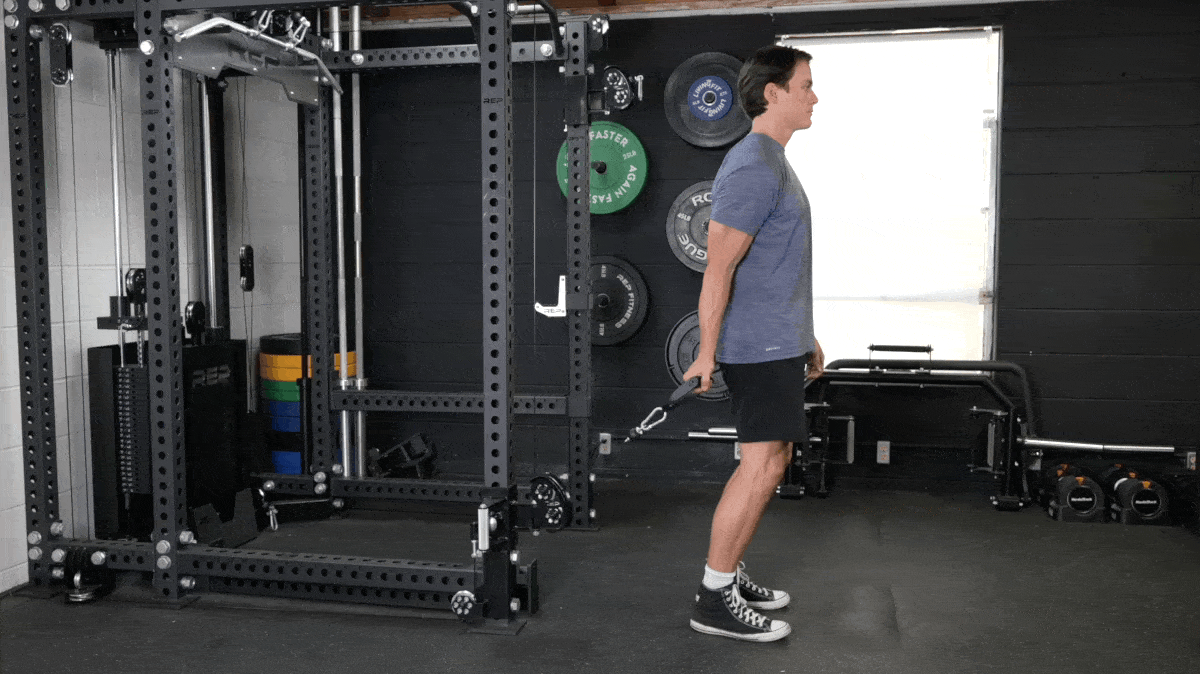“Many people train their biceps incorrectly,” said Dr. Mike Israetel, co-founder of Renaissance Periodization, in March 2025. He argues modern curling techniques are superior to traditional free-weight curls.
If you incorporate this new curl style, you are likely to get better results. After 25 years of training, these new exercises showed me novel growth.
—Dr. Mike Israetel
Should you avoid traditional curls for good? “No Way,” Dr. Israetel assured. They still offer suitable stimuli and versatility. However, he prioritizes these three biceps curl variations based on the latest studies:
Top 3 Curl Variations
- Lying Cable Curls
- Bayesian Curls
- Lying Dumbbell Curls
[Related: Chris Bumstead’s Ultimate Bulking Guide]
Problems with Traditional Curls
Dr. Israetel first addressed why traditional standing or seated curls are suboptimal.
There’s [minimal] tension at the bottom. Longer muscle lengths, which are most growth-promoting, don’t get much tension.
—Dr. Mike Israetel
Curls are typically more challenging halfway through a rep, reducing strength in the more optimal lengthened range of motion. Upright curls provide a moderate stretch. Curls with the arms behind the body at an angle are most effective.
Incline dumbbell curls are a little better since they stretch the biceps at the shoulder joint, but the arms are still vertical, which doesn’t maximize stretch and tension in the lower biceps.
- Fully stretching muscles under load results in slightly more muscle growth than concentric contractions. (1)(2)(3)
Another downside of traditional curls is axial fatigue, which strains the spine and can hinder performance during squats, bent-over rows, etc.
What Makes a Good Curl?
How to maximize biceps development:
- High tension at full muscle lengths
- Less tension at short muscle lengths
[Related: Experts and Science Agree These Are the Best Biceps and Triceps Exercises]
Better Curl Variations
These variations cause less spinal fatigue and a more significant stimulus for the biceps.
Lying Cable Curls
Lying cable curls remove gravity, spinal loading, and momentum from the equation, maximizing biceps isolation in the process. You won’t get a significant stretch, but it has several advantages over standing or seated free-weight curls. Here’s how to do them:
- Step 1 — Use a straight bar attachment on a low pulley cable.
- Step 2 — Utilize a supinated grip on the bar and lie back. Make sure your arms are fully extended and that there is tension on the cable.
- Step 3 — While lying flat, curl your arms up from the fully extended position until the bar reaches your chest and your knuckles are pointing toward your chin.
- Step 4 — Lower the weight slowly to its starting position, keeping your elbows tucked through the entire rep.
This move can be performed either on the floor or on a flat bench. Utilize slow, controlled reps and take advantage of the full extension.
Behind-the-Back Curls
Also called Bayesian curls, this move is optimized with cables and can be done seated or standing. Here’s how to do them:
- Step 1 — Set an adjustable cable to its lowest height and fasten a single-handle attachment to the carabiner.
- Step 2 — Grab the handle with your working arm and turn around so you’re facing away from the cable station.
- Step 3 — Take a step or two away from the cable, allowing your arm to be drawn back behind your torso at about a 45-degree angle relative to the floor.
- Step 4 — Suspend your upper arm motionless and bend at the elbow, curling the weight with your biceps. Hold your free arm out to the side or place it on your hip for stability.

Maximum tension occurs in the fully stretched position; they are most challenging at the start and more effortless at the top. Start slowly and use lighter weight to find your comfort zone.
Lying Dumbbell Curls
Lying dumbbell curls are another great behind-the-back curl that offers more tension and stretch in the lengthened position. However, they can cause shoulder discomfort. Leaning back on the side of the bench makes it more shoulder-friendly. Avoid training too heavy. Here’s how to do them:
- Step 1 — Lie on your back on a flat bench with a dumbbell in each hand and your arms hanging off the sides. Do not rest the weights on the floor.
- Step 2 — Curl the weights up by flexing your elbows until your forearms point toward the ceiling.
More Bodybuilding Content
- How Ashley Kaltwasser Preps for the 2025 IFBB Pro Season
- How Shanique Grant Trains to Move to the Wellness Division
- Wesley Vissers’ 4 Go-To Ab Exercises
References
- Maeo S, Wu Y, Huang M, Sakurai H, Kusagawa Y, Sugiyama T, Kanehisa H, Isaka T. Triceps brachii hypertrophy is substantially greater after elbow extension training performed in the overhead versus neutral arm position. Eur J Sport Sci. 2023 Jul;23(7):1240-1250. doi: 10.1080/17461391.2022.2100279. Epub 2022 Aug 11. PMID: 35819335.
- Pedrosa GF, Lima FV, Schoenfeld BJ, Lacerda LT, Simões MG, Pereira MR, Diniz RCR, Chagas MH. Partial range of motion training elicits favorable improvements in muscular adaptations when carried out at long muscle lengths. Eur J Sport Sci. 2022 Aug;22(8):1250-1260. doi: 10.1080/17461391.2021.1927199. Epub 2021 May 23. PMID: 33977835.
- Kassiano W, Costa B, Kunevaliki G, Soares D, Zacarias G, Manske I, Takaki Y, Ruggiero MF, Stavinski N, Francsuel J, Tricoli I, Carneiro MAS, Cyrino ES. Greater Gastrocnemius Muscle Hypertrophy After Partial Range of Motion Training Performed at Long Muscle Lengths. J Strength Cond Res. 2023 Sep 1;37(9):1746-1753. doi: 10.1519/JSC.0000000000004460. Epub 2023 Apr 3. PMID: 37015016.
Featured image: @pathradecha on Instagram